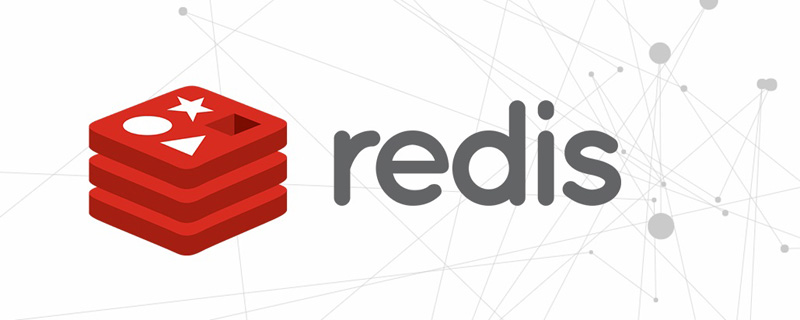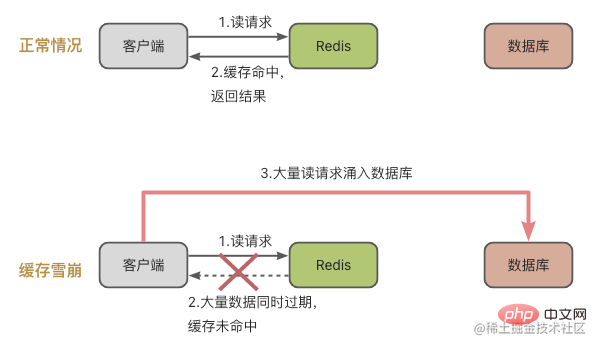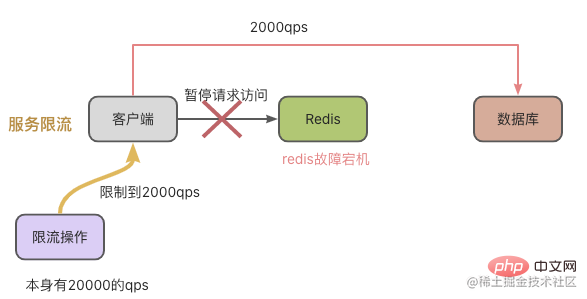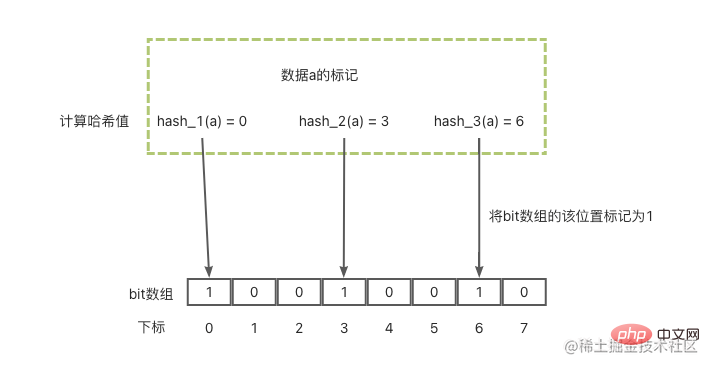This article brings you relevant knowledge about Redis, which mainly introduces the relevant content about cache avalanche, cache breakdown and cache penetration. Let’s take a look at it together. I hope it will be helpful to you. Everyone is helpful.

Recommended learning: Redis video tutorial
About Redis’ high-frequency issues, cache avalanche, cache breakdown and cache penetration It must be indispensable. I believe everyone has been asked similar questions during interviews. Why are these questions so popular? Because when we use Redis cache, these problems are easy to encounter. Next, let’s take a look at how these problems arise and what the corresponding solutions are.
First let’s take a look at cache avalanche. The concept of cache avalanche is: a large number of requests are not processed in the Redis cache, resulting in requests flooding into the database. , and then the pressure on the database increases dramatically.
The reasons causing cache avalanche can be summarized as two:
Let’s take a look at the first scenario: a large amount of data in the cache expires at the same time.
Combined with the legend, it means that a large amount of data expires at the same time, and then there are many requests to read the data at this time. Of course, a cache avalanche will occur, causing a dramatic increase in database pressure.

To deal with the problem of a large amount of data to expire at the same time, there are usually two solutions:

#After looking at the situation where a large amount of data expires at the same time, let’s take a look at the situation where the Redis cache instance fails.
In this case, Redis cannot process the read request, and the request will naturally be sent to the database.
Generally speaking, we have two ways to deal with this situation:
Service circuit breaker means that when Redis fails, requests for access to the cache system are suspended. Wait until Redis returns to normal before opening the request for access.
In this way we need to monitor the running status of Redis or the database, such as MySQL's load pressure, Redis's CPU usage, memory usage and QPS, etc. When it is discovered that the Redis instance cache has collapsed, the service will be suspended.
This situation can effectively place a large number of requests and put pressure on the database. However, access requests will be suspended, which will have a great impact on the business end.

Therefore, in order to reduce the impact on the business end, we can use the request current limiting method to control QPS and avoid too many requests to the database. For example, in the illustration below, there are 20,000 requests per second, but it was down due to a Redis failure. Our current limiting operation reduced the qps to 2,000 per second, and the database still had no problem processing 2,000 qps.

Cache breakdown means that individual frequently accessed hotspot data cannot be cached, and then requests are poured into the database. It often happens when hotspot data expires.

Regarding the cache breakdown problem, we know that these are hot data that are accessed very frequently, so the processing method is simple and crude, and the expiration time is not set directly. Just wait until the hotspot data is not accessed frequently and then handle it manually.
Cache avalanche is something special. It means that the data to be accessed is neither in the Redis cache nor in the database. When a large number of requests enter the system, Redis and the database will be under tremendous pressure.

There are usually two reasons for cache penetration:
For cache penetration, you can refer to the following solutions:
The first and third points are easier to understand and will not be described here. Let’s focus on the second point: Bloom filters.
The Bloom filter is mainly used to determine whether an element is in a set. It consists of a fixed-size binary vector (can be understood as a bit array with a default value of 0) and a series of mapping functions.
Let’s first take a look at how the Bloom filter marks a data a:
After these 3 steps, data labeling is completed. Then you need to query the data when it is not there:
Combined with the picture below, the basic principle is like this.

Recommended learning: Redis video tutorial
The above is the detailed content of Understand redis cache avalanche, cache breakdown and cache penetration in one article. For more information, please follow other related articles on the PHP Chinese website!
 Commonly used database software
Commonly used database software
 What are the in-memory databases?
What are the in-memory databases?
 Which one has faster reading speed, mongodb or redis?
Which one has faster reading speed, mongodb or redis?
 How to use redis as a cache server
How to use redis as a cache server
 How redis solves data consistency
How redis solves data consistency
 How do mysql and redis ensure double-write consistency?
How do mysql and redis ensure double-write consistency?
 What data does redis cache generally store?
What data does redis cache generally store?
 What are the 8 data types of redis
What are the 8 data types of redis